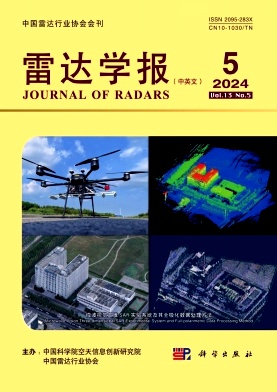影响MTPT机载SAR图像剩余运动估计的两个因素:影响MTPT机载SAR图像剩余运动估计的两个因素
Q2 Physics and Astronomy
引用次数: 0
摘要
由于导航系统的精度较差,在SAR图像中经常出现实际和测量轨迹之间的厘米量级的偏差,称为残余运动误差。对于非常高分辨率的机载SAR系统和机载重复通道SAR干涉,必须对残余运动误差进行估计和补偿。点目标多斜视技术(MTPT)能够估计单幅SAR图像的残余运动误差,但平台速度和倾斜范围的误差会降低该方法的精度。在本文中,我们通过使用模拟和真实的SAR数据对速度和倾斜范围进行详细的分析来验证这一点。结果表明,MTPT能够估计速度和倾斜范围内的误差,并且对相位误差敏感。因此,建议在此之前使用其他精确的方法去除速度和倾斜范围的误差本文章由计算机程序翻译,如有差异,请以英文原文为准。
Two Factors Influencing Residual Motion Estimation in Airborne SAR Images with MTPT: Two Factors Influencing Residual Motion Estimation in Airborne SAR Images with MTPT
Due to the poor accuracy of navigation systems, deviations of the order of centimeters between the real and measured trajectories, called residual motion errors, frequently occur in SAR images. For airborne SAR systems with very high resolution and airborne repeat-pass SAR interferometry, the residual motion errors must be estimated and compensated. Multi-squint Technique with Point Targets (MTPT) is able to estimate the residual motion errors for an individual SAR image, but errors in the platform velocity and the slant range will deteriorate the accuracy of the method. In this paper, we validate this by performing detailed analysis of the velocity and slant range to residual motion error estimation using both simulated and real SAR data. It is also shown that MTPT is able to estimate the errors in the velocity and slant range, and it is sensitive to the phase error. Therefore, it is advised that the errors in the velocity and slant range should be removed using other precise methods before
求助全文
通过发布文献求助,成功后即可免费获取论文全文。
去求助
来源期刊

雷达学报
Physics and Astronomy-Instrumentation
CiteScore
4.10
自引率
0.00%
发文量
882
期刊介绍:
Journal of Radars was founded in 2012 by the Institute of Space and Astronautical Information Innovation of the Chinese Academy of Sciences (formerly the Institute of Electronics) and the China Radar Industry Association (CRIA), which is located in the high-end academic journal and academic exchange platform in the field of radar, and is committed to promoting and leading the scientific and technological development in the field of radar. The journal can publish Chinese papers and English papers, and is now a bimonthly journal.
Journal of Radars focuses on theory, originality and foresight, and its scope of coverage mainly includes: radar theory and system, radar signal and data processing technology, radar imaging technology, radar identification and application technology.
Journal of Radars has been included in domestic core journals and foreign Scopus, Ei and other databases, and was selected as ‘China's high-quality science and technology journals’, and ranked the first in the category of electronic technology and communication technology in the ‘Chinese Core Journals List (2023 Edition)’.
 求助内容:
求助内容: 应助结果提醒方式:
应助结果提醒方式:


